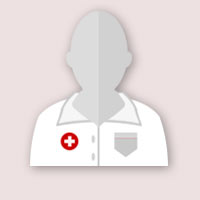Infectious Diseases
An infectious disease is an illness that results from the presence or growth of a pathogen. The pathogen may be encountered rarely or may normally reside within the human body, only causing disease under particular circumstances. Infectious diseases can be caused by bacteria, viruses, fungi, and parasites. The symptoms of infectious disease vary in type and severity, as do their methods of transmission.
Symptoms of Infectious Diseases
Depending on the organism responsible for the illness, symptoms vary. In some cases, where the symptoms are mild, including nasal congestion, body aches, and fatigue, patients may recover quickly with rest, hydration and over-the-counter analgesics. More severe symptoms of infectious diseases, however, may include more serious or persistent symptoms and medical care may be required. In the case of the most serious infectious diseases, hospitalization will be necessary.
Symptoms of infectious diseases may vary widely in severity, including
- Fever
- Weakness
- Vomiting and diarrhea
- Muscle aches
- Respiratory difficulty
- Congestion and/or cough
- Rash or swelling
- Sudden visual problems
- Unexplained bleeding
Transmission of Infectious Diseases
Infectious diseases are transmitted in a great variety of ways, only some of which include close or intimate personal contact with an infected person.
Infectious diseases can be contracted through:
- Inhalation of airborne particles
- Ingestion of contaminated food or water
- Touching contaminated surfaces
- Being bitten by infected humans, animals, or insects
- Touching animal feces, such as those in kitty litter
- Touching contaminated human fluids, then touching eyes, nose, mouth or broken skin
Because it is not possible to know in advance whether a surface or object is contaminated, it is wise to exercise caution and wash or sanitize hands frequently, especially before eating.
Direct Contact
The most familiar way to contract an infectious disease is through contact with a person who has the disease. This can happen in a number of ways as when individuals, one of whom is infected:
- Share close common breathing space (influenza)
- Kiss or shares food or drink (mononucleosis)
- Have sexual contact (herpes or HIV/AIDS)
- Share transfused blood
An infectious disease can also be transmitted when a person is bitten, scratched, or licked by an infected animal, human or insect, or when a mother passes the illness to her unborn child.
Indirect Contact
Infectious disease can also be transmitted indirectly. In many cases, germs can survive on inanimate objects, such as doorknobs, faucet handles, or even medical instruments, for a reasonably long period of time. Without proper sanitary procedures, it may be possible to pick up a serious illness simply by touches a contaminated surface and unthinkingly touching the eyes, nose, mouth, or a cut in the skin before washing the hands. One common way indirect contact spreads infectious disease is through preparation and ingestion of contaminated food, as with E.coli bacteria.
Prevention of Infectious Diseases
Many infectious diseases can be prevented by administration of vaccines. Immunizations, which cause the immune system to develop antibodies, usually prevent the targeted disease from developing in the vaccinated person. Examples of successful vaccines for infectious diseases include those for:
- Measles
- Rubella (German measles)
- Chickenpox
- Polio
- Shingles
- Pneumococcal pneumonia
In the rare cases when a person who has been vaccinated develops the disease, the symptoms are usually much milder than those experienced by a patient who has not been vaccinated. Routine hygiene practices are very helpful in preventing the spread of infectious diseases, including washing the hands frequently and thoroughly, using hand sanitizers, and cleaning contaminated surfaces and objects immediately.
Additional Resources
- MedlinePlus
- National Institutes of Health
- Centers for Disease Control and Prevention
- Eunice Kennedy Shriver National Institute of Child Health and Human Development
- U.S. Department of Health & Human Services
- U.S. National Library of Medicine
- WebMD
Copyright © 2013 - 2025 Da Vinci Interactive Webservices, Inc.
All Rights Reserved.
Content presented on this website is for general information only. The healthcare provider | Andrew Gough D.O. | is not responsible for any content selection, or any errors, inconsistencies, or outdated information.
